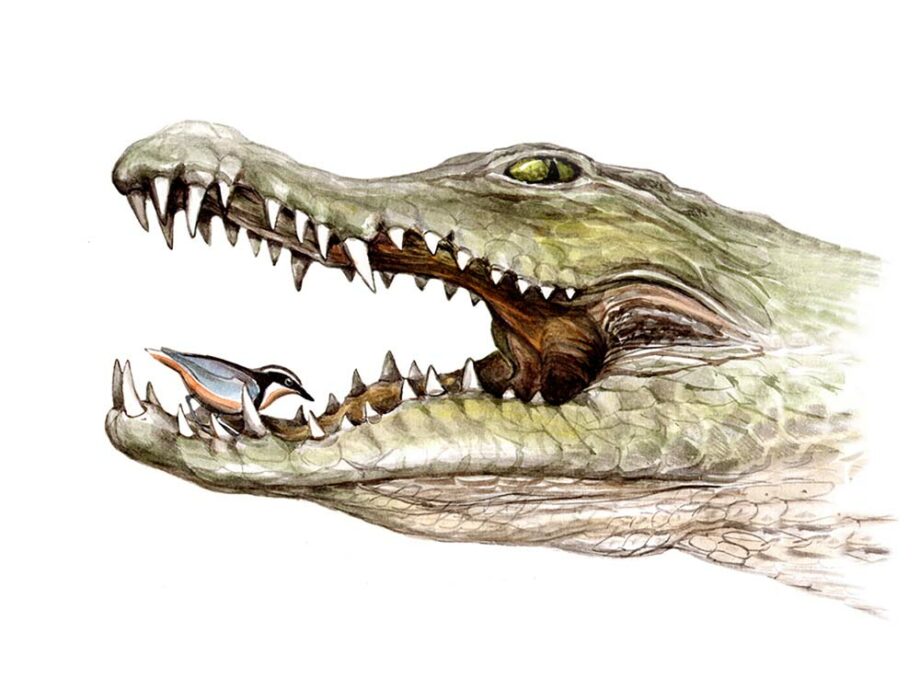Symbiotic relationships are interactions between two different biological species. Some scientists consider all interactions between organisms to be symbiotic, including parasitic relationships. However, symbiosis usually refers to mutualism, in which both organisms benefit from the interaction. In the bird world, there are many examples of these symbiotic relationships, but here are just a few of our favorites.

Nile Crocodile and Egyptian Plover
The symbiotic relationship between the crocodile and the plover bird is exemplary of two organisms working together. The plover bird flies inside the crocodile’s mouth, which may seem dangerous for the bird. However, the plover bird is actually getting a meal of its own by eating the meat from between the crocodile’s teeth. Meanwhile, the crocodile is also benefitting from this arrangement. Additionally, food stuck in the mouth of the crocodile can cause infection, and the plover bird’s picking cleans the crocodile’s teeth. Therefore, when a crocodile needs its mouth cleaned, it will open it and wait for the plover bird’s help.

Water Buffalo and Oxpecker
The oxpecker is a medium-sized bird that can have a symbiotic relationship with a variety of hoofed mammals. Large mammals like the water buffalo are prone to ticks, which feed on their blood and can spread diseases and cause anemia. Luckily for the water buffalo, the oxpecker feeds on ticks. By eating the ticks from the hide of the water buffalo, the oxpecker gets a free meal, and the water buffalo gets cleaned of parasites.

Zebra and Ostrich
Like many symbiotic pairs, zebras and ostriches seem to be an unlikely match. However, they are crucial to each other’s safety. While ostriches have poor senses of hearing and smell, zebras have bad eyesight. Additionally, ostriches and zebras often travel together because they can warn each other of possible dangers. The ostrich looks out for the zebra’s enemies, and the zebra listens and smells for the ostrich’s predators.
Feature Image from Charl Durand/Unsplash




